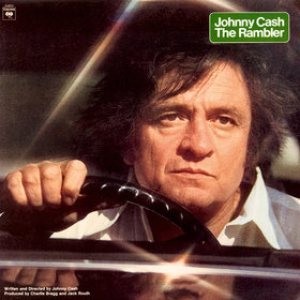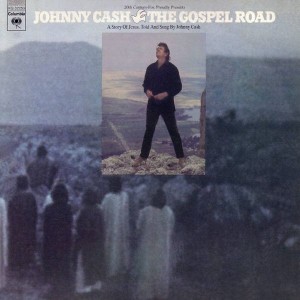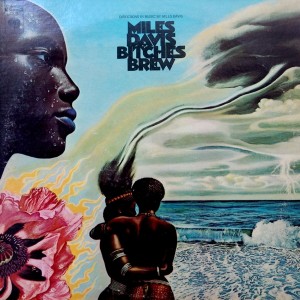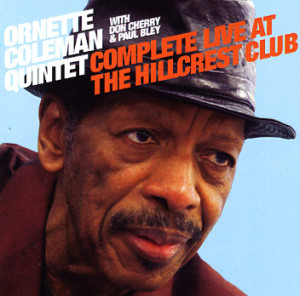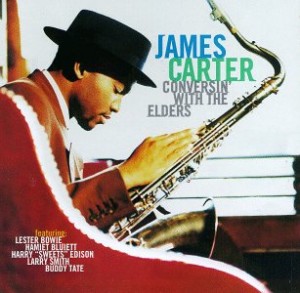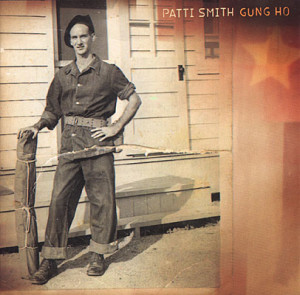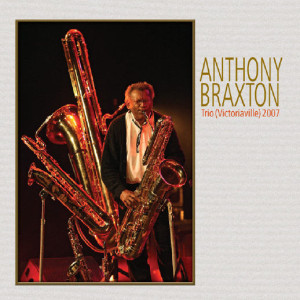Article on the business of pro wrestling by Dan O’Sullivan:
Month: August 2014
Link Wray – Link Wray
Link Wray – Link Wray Polydor PD-24-4064 (1971)
It is often the case that musical innovators languish in obscurity, or something close to it. In rock, there are examples all over, like The Velvet Underground. Link Wray is another. He is best known for his raw 1958 instrumental classic “Rumble,” which paved the way for The Kinks‘s “You Really Got Me,” Pete Townshend‘s monster guitar power riffing with The Who, and much of the surf-rock genre. But commercial success didn’t really come his way. “Rumble” was something of a flash in the pan hit, but after recording a whole album of prime material, his clean-cut label dropped him without releasing his recordings — a story that might have been quite different if Wray had somehow found his way to the attention of Sun Records. He bounced to a few other labels, but the momentum from “Rumble” was largely lost and soon the moment had passed to other sounds. He became something of a footnote in rock history: the guy who added raw, improvised (as in makeshift) distortion to rock guitar.
If all you know of Link Wray is “Rumble,” or some excellent if now little-known follow-up instrumentals like “Raw-Hide,” “Jack the Ripper” and “Fat Back,” or even his later career efforts like Barbed Wire that modernized his original sound without losing the raw energy, Link Wray might be a surprise. It sounds nothing like Wray’s signature early instrumental rock. This is music that bears more resemblances to the country rock of The Basement Tapes by Bob Dylan & The Band crossed with the swampy southern rock of Creedence Clearwater Revival or Dr. John, but with searching, moody and almost existential songwriting of the kind that showed up later in the decade on Dennis Wilson‘s cult classic Pacific Ocean Blue. Link Wray is the blueprint for The Rolling Stones‘s Exile on Main St. Wray’s soulful vocals recall Felix Cavaliere of The Rascals. That is no small feat. Link Wray’s early recordings were instrumentals for a reason: he had his left lung removed after contracting tuberculosis (consumption) during military service in the Korean War.
By the dawn of the 1970s the center of gravity for rock — and by extension all pop music — was shifting away from New York City and Britain toward California. West Coast studios were ahead of their Eastern peers in adopting more elaborate recording technologies and techniques. The very sound of rock music was also growing more complex and intricate, with symphonic rock, rock operas, glam and prog gaining steam. Even just within the realm of singer-songwriters, the more overtly produced and orchestrated styles of the likes of Elton John and Randy Newman were overtaking the simpler, mostly acoustic folk of popular 60s performers epitomized by Joan Baez. Amidst all that Link Wray was yet again cutting against the grain of the industry establishment. He set up his own three-track studio in a converted chicken coop on his family’s farm in Accokeek, Maryland. In that setting he experimented with his own sound in relative seclusion (as with The Basement Tapes). He recorded this in that primitive fashion. The album is no joke. It exudes complete honesty, even to the point of being somewhat blunt and ungainly at times. But Wray’s lethargic guitar sounds just fine in a georgic setting far removed from his characteristic power chords. Muffled piano and vocal choruses bolster the hopeful messages nestled in the murky, indistinct sound. Link Wray is a little beauty that deserves another look, hopefully someday to be rescued from the obscure and dusty corners of early 70s rock.
Johnny Cash – The Rambler
Johnny Cash – The Rambler Columbia KC 34833 (1977)
Johnny Cash was a pioneer in making “concept” albums. These included some with between-song narrations or skits. The very last one he ever made was 1977’s The Rambler. In some ways, it’s the most interesting of them all, though it is a little rough around the edges. The basic premise is that Cash plays The Rambler, a sort of “wise old man” character driving across the country. Along the way he picks up The Fisherman, who is something of a reluctant hitchhiker (the Rambler has to persuade him to come along), and The Cowgirl, who claims to have killed her “old man” and talks about cheating a pinball machine — which only cost a nickel — to play for over two hours. The dialogue/skits are woven together with songs that pick up on themes and events mentioned in the skits. What is different about The Rambler from earlier concept albums like Ride This Train and America: A 200-Year Salute in Story and Song is that this one is explicitly theatrical, with Cash acting out a role, not merely speaking as a narrator. This is also the only concept album Cash made that had a contemporary focus. All his other concept albums looked back on historical topics or had nostalgic themes. It is also worth noting that The Rambler is one of the only albums Cash wrote entirely by himself (From Sea to Shining Sea seems to be the only other he wrote all by himself).
The story carried through the album deals with the possibilities of open-ended road trips, passing scenery, romantic interests back home, people’s use for religion, factory work. For instance, “Wednesday Car” is in the tradition of songs Cash had recorded earlier in the decade like “Oney” and “One Piece at a Time.” It’s about an auto factory where the only day of the week that workers were in the right frame of mind to do good work was Wednesday, so you hope you have a car made on a Wednesday. The Rambler says he has one. It’s a commentary that was somewhat specific to its time. Anyone who owned or rode in a big 1970s American-made car knew that quality control was notoriously bad and many cars were “lemons” that didn’t work well even when brand new. A few decades on some listeners might not appreciate the context for the song, though.
The late 1970s were one of the very worst periods of Johnny Cash’s recording career. Thanks to his TV show that ended in 1971, he was still riding the tail end of his biggest wave of popularity. He was in demand as a live performer, and his grueling touring schedule didn’t exactly leave a lot of room to spend time on recording. As a result, the album occasionally feels rushed, and certain songs and dialogues feel like they would have benefited from maybe a few extra takes. Also, a few dated production effects hold back some songs. It’s that way with “No Earthly Good,” which would have been better replaced with the superior acoustic demo version posthumously released on Personal File.
While not Cash’s finest moment by any means, The Rambler is one of his best of the late 70s and certainly the most interesting offering of the era. It fits somewhere in the continuum of uniquely American travelogues, like Mark Twain’s Adventures of Huckleberry Finn, Woody Guthrie’s Bound for Glory, Jack Keruac’s On the Road, Monte Hellman’s Two-Lane Blacktop, and a host of others. Cash does okay with his foray into the genre. Even though the album is theatrical and fictional, the format allows him to really run with a lot of themes that have coursed through his work. The topics seem meaningful to him and his treatments pretty genuine. The very idea of traveling around the country aimlessly is pretty radical. It seems to be premised on the idea that people aren’t entirely independent, and are unable to completely control their own destiny, because of ties to “the system”. But, maybe, traveling long and far enough, some chance will arise to kind of break free and remake your life. Though it is worth mentioning that the Rambler character also hints at the “tramp” archetype of an unemployed worker in an industrial economy, wandering aimlessly in search of work. This was something with some historical relevance at the time the album was released, with “outsourcing” trends beginning and well-paid employment in factories coming under sharply increasing assault.
If you come to The Rambler just looking for tunes, you’ll be disappointed. To be precise, only about 57% of the album is actually made up of songs, proper. Frankly, none of these songs are that memorable, individually. Taken as a whole, though, this album is a nice experience. There aren’t many albums — if any — quite like it.
Johnny Cash – The Gospel Road
Johnny Cash – The Gospel Road Columbia KG 32253 (1973)
And He spoke, and the multitude assembled contemplated, “Why dost thou release such a substandard recording?” In an era in which double LPs seemed de rigueur, Johnny Cash managed to one-up the proposition by making a film about Jesus and releasing this double LP soundtrack to it. It has all the hallmarks of a big-budget vanity record. It plays like Cash’s thank you note to Jesus for helping him deal with his drug addictions. It has about the same entertainment value and artistic merit as a nondescript thank you note to someone else found out on the street. Only (a) bonzo Cash completists (like me) and (b) religious zealots are really ever going to listen to this, and for those poor saps it will probably be a one-time thing because this has zero replay value — if you make it all the way through the first time that is. Facts aside, it feels like this record is one long speech by Cash. The music is almost something fit in around the narrations, rather than the other way around. If you want just the music, you are denied even that because the narrations are not just interludes between songs but are woven through the songs themselves.
Inasmuch as this album and the movie that spawned it were among Cash’s proudest achievements of his career, it’s worth giving this a more thorough reading. The film, The Gospel Road, wasn’t exactly typical Hollywood fare. It was filmed in Israel, on location where Jesus supposedly lived and preached. Cash was in it, as himself, Robert Elfstrom was Jesus, and June Carter Cash played Mary Magdalene. Something of an independent production, made with a lot of people who aren’t professional actors or filmmakers, this didn’t exactly get major distribution. But Cash worked with Billy Graham to show it to churches and religious audiences.
There is an odd tone to the album. Cash fluctuates. At times he seems to see Jesus as a historical figure and archetype of a “good person” who lived life “right” and to have done so had to be essentially an outsider and revolutionary within his society. It’s a kind of knowing view that although these are religious beliefs there is something more rational behind the stories that make them significant. But then, at other times he seems to take something excessively literal, and there is a deadpan acceptance of the “Jesus was magic” sort of miracle making. Could it be that maybe Cash just took seriously the things that most in society look at as accepted belief rituals and symbols that privately everyone acknowledges are just myths that are regularly told and politely tolerated and not questioned openly? In those moments — there are plenty here — Cash seems naive. It’s a sort of regression. His earliest recordings in the 1950s came from a stylistic place in which rural life was widely recounted and even celebrated with a wise and thoughtful touch. Here he seems like the oblivious fool who doesn’t seem to get that he is proclaiming something quite unsophisticated. “Jesus” just becomes a symbol of something beyond, a life unattainable. At times Jesus is presented as something of a role model — do away with hypocrites, be good to others especially the needy and downtrodden, contribute to your community. But this routinely crosses over into the realm of setting up unattainable, fantasy images, sort of a carrot on a stick. If these moments ended with a wink, an acknowledgement that this is just allegory and not meant to be taken literally, the whole effort might be more palatable. But those moments never come. Cash doesn’t really reveal the wizard behind the curtain as some ordinary joe.
So, the music? There are some good bits. The most intriguing stuff appears on side four, where orchestrated passages with a prominent horn meant to sound “eerie” and unsettling start to approach the sound of modern jazz, and in that are interesting for unintended reasons. Some of the guitar and piano is good in places too. They aren’t featured that much, so that’s a disappointment. Early on there are some overbearing strings placed over the music that get quite tiresome. June carter does a solo song, and Kris Kristofferson and others appears too, with good results. The biggest disappointment, though, is Johnny Cash. His singing is often quite noticeably poor. He sounds downright unrehearsed. He voice is frequently off-key and hoarse almost. The best moments just kind of pass by quickly and the most tedious ones drone on for minutes. Some of these songs might have been interesting standing alone, but with the narrations and fragmentary nature of these versions they don’t add up to much. Take “He Turned the Water Into Wine (Part 1),” for instance. Cash had been performing the song live and on his TV show for years. The version he performed February 11, 1970 at the conclusion of “The Johnny Cash Show” or the similar version included on The Gospel Music of Johnny Cash makes a useful comparison. Live, Cash made the song a multifaceted thing of beauty, with mellow parts just with Cash’s voice and acoustic guitar, then building up with backing vocal choruses and a full band, with Cash’s voice reaching a soaring crescendo and finding opportunities for infectious syncopation. At his best, Cash made the song a marvel of coordination and cooperation between all the many performers. The full song is not just about the wedding at Cana (John 2:1-11), but also about the feeding of the multitude of 5,000 with five loaves of bread and two fish (Matthew 14:13-21, Mark 6:31-44, Luke 9:10-17 and John 6:5-15). The intricate performance by Cash’s band lends the possibility of interpreting these parables as an act of convincing a crowd to share and contribute and being good and generous. But the performance on The Gospel Road is just Cash with guitar and a little plunking and cloying piano, delivering a few lines and then turning to a narration emphasizing the “miracle” of supposedly turning water into wine at the Cana wedding (without reference to the feeding of the multitude). This leaves no room for an allegorical interpretation, only that literally there was an act of “magic” transforming matter against the law of physics. The most wonderful aspects of the other performances are totally absent, leaving a hollow, worthless shell.
In the end, Cash approached The Gospel Road as an effort in proselytizing and religious praise, not as a work of purely musical value. This sounds like a rube gushing about intimate personal details that don’t have a place in public. Lots of gospel music provides a framework to let deep passions, emotions and feelings out in ways they might not otherwise. But, dear reader, this is not one of those opportunities! Musical treatments get short shrift and the audience is almost taken for granted, in the worst possible way. We need to look at The Gospel Road as a token indulgence earned after a long career of good efforts, but not as something to really take seriously. Then it can be safely ignored, like a bootleg copy of home recordings that weren’t ever supposed to be released.
Shoulda Run Him In the Ditch
Link to a video of a man from Alabama encountering a bicyclist, with narration worthy of Heavy Metal Parking Lot (1986):
Directions in Music By Miles Davis – Bitches Brew
Directions in Music By Miles Davis – Bitches Brew Columbia PG 26 (1970)
There is no question that Bitches Brew is a milestone of that beast known as “jazz fusion”. What continues to astound is how odd it really was. This was heralded for it efforts to introduce rock influences to jazz music. But this sounds like no rock record of its age, or any other. Miles went on to record far more “rock” sounding albums, like A Tribute to Jack Johnson. This things was something else entirely. It presents a modulating soundscape with hardly any points of reference. No matter what angle you approach this from, its massive sound just overtakes your any contextual references brought to the table. You can hear Miles play trumpet, but amidst the washes of keyboard, guitar, horns, bass and drums, the whinnies and blurts coming out of Miles’ horn sound other-worldly. The sheer number of players that are heard and the amount of raw material spliced together to form the the finished product was something new for a “jazz” album. What it ensures is that the textures continually shift. I somewhat rarely throw this on my stereo, but when I do I’m always surprised. There seems to always be another layer to the music waiting to be discovered. The density of the vision is great, because you can pick out any song, jump in at just about any point, and find one of those perfect notes. Those are the notes that feel like the culmination of the massive sonic fabric that surrounds them. And to think that “fusion” was a fairly new concept when this album came together, it’s a remarkable thing indeed that the creativity and power of the album is at a maximum throughout. Don’t bother looking for missteps. For the most part, this album defined the 1970s in jazz. That might have been for the better early on, even if it was for the worse after around 1975 when Miles went into temporary retirement. There probably is no other artist or group that reached the heights Miles did with this form. Sure, others made major contributions and achieved great things. But Miles was able to take the basic idea here and take it many different directions over the years with countless lineups. You’ll probably either hate this, or love it to the point of addiction to the relentless, harrowing journey Miles will take you on through the rest of his activities in the 70s.
Paul Bley Quintet – Complete Live at The Hillcrest Club
Paul Bley Quintet – Complete Live at The Hillcrest Club Gambit 69272 (2007)
Wow. In short, what you have here is pretty sloppy packaging of some great music.
The packaging: Well, to begin with, the cover and liner features a photo of Ornette Coleman that must have been taken close to 50 years after the music was recorded. Then the tracklist is messed up completely. Track number five is labeled “When Will the Blues Leave?” and track seven labeled “Ramblin'”, while track five is clearly “Ramblin'” and track seven is clearly “When Will the Blues Leave?” when you play the music. Then, there is the fact that this is credited as an Ornette Coleman record. Strictly speaking, these recordings were made at gigs led by Paul Bley where Ornette and Don Cherry just sat in. But, Ornette does steal the show, there are tons of Ornette’s compositions here, and Bley was so profoundly influenced by Ornette that maybe it’s only slightly misleading to call the album Ornette’s own.
The music: Awesome. Previously released on Paul Bley/Ornette Coleman/Don Cherry/Charlie Haden/Billy Higgins: The Fabulous Paul Bley Quintet and Coleman Classics, these live recordings show that, musically, Ornette was leaps and bounds ahead of what his problematic first studio album suggested. The landmark contribution Ornette made to jazz was in disengaging improvisation from a verse/chorus format built around repeating harmonic structures, and turning it into something that seems to continuously move forward, as Paul Bley explained in his September 2007 interview in The Wire magazine. It’s a style more linked with serialism in Euro-classical music (think Anton Webern) than the hard bop and cool jazz traditions still in vogue in 1958.
In truth, the sound quality here approaches that of a bootleg. Billy Higgins and especially Charlie Haden sound quite muddy in the mix, and Bley is hardly audible when comping — only becoming distinctly clear when taking solos. Yet the horns come across quite clearly. Don Cherry is in a surprising form, playing with a delicacy on “How Deep Is the Ocean” rarely associated with him. But Ornette is really front and center here, showing why he is known as one of the greatest stylists and soloists. Well, perhaps Ornette’s talents aren’t quite as popularly recognized as they should be. Bley once described the negative reaction to the music at the Hillcrest Club, which catered to a predominantly black, working-class audience. He exaggerates some (audience chatter and even applause is audible on the recordings), stating that when his band with Coleman and Cherry took the bandstand:
“Several things happened almost at once. The audience en masse got up, leaving their drinks on the table and on the bar, and headed for the door. The club literally emptied as soon as the band began playing.
“For the duration of that gig, if you were driving down Washington Boulevard past the Hillcrest Club you could always tell if the band was on the bandstand or not. If the street was full of the audience holding drinks in front of the club, the band was playing. If the audience was in the club, it was intermission.”
Stopping Time: Paul Bley and the Transformation of Jazz (1999), p. 63.
But then, Goethe offers the following in his travelogue Italian Journey, Part One (1816):
“One gets small thanks from people when one tries to improve their moral values, to give them a higher conception of themselves and a sense of the truly noble. But if one flatters the ‘Birds’ with lies, tells them fairy tales, caters to their weaknesses, then one is their man. That is why there is so much bad taste in our age.”
In quite a later age too Johann.
James Carter – Conversin’ With the Elders
James Carter – Conversin’ With the Elders Atlantic 82908-2 (1996)
A great many people play classic jazz tunes like “Parker’s Mood,” “Lester Leaps In,” “Naima,” and “Moten Swing.” Precious few put out albums with those songs set beside the likes of Anthony Braxton‘s “Composition #40Q” and Lester Bowie‘s “FreeReggaeHiBop” (AKA “Ska Reggae Hi-Bop” as recorded by Bowie with The Skatalites) and find ways to make each and every performance dazzle. But James Carter does just that on Conversin’ With the Elders. Working with an assortment of elder statesmen of jazz from whom he has drawn inspiration, he is never intimidated for a second. His tone is brash as always. Yet what marks this album as something special is that it connects Carter’s music to a sense of context. Nicholas Boyle, writing an introduction to a Selected Works English-language edition of writings by Johann Wolfgang von Goethe, said that “Goethe — it is especially evident in his novels — was aware that the meanings that make up our lives may come from outside us. *** [W]e find ourselves by giving up the search for ourselves and finding instead the world — a world which is there for us . . . .” And so it would seem with James Carter too, for he is never bound up with distancing himself from tradition. He instead positions himself within a continuum represented by the songs and collaborators he works with. He is of course a recognizable force within that continuum, such as how he at times fractures the familiar melodies of some of these songs and squawks his way through the more conservative material, but it is precisely by working with, rather than against, the bits and pieces of musical history you have here that he achieves something much greater than just another futile attempt to make a complete break with that which came before. In that sense this is the final frontier of music, where everything is put on the table and what was already there can’t be ignored. Music like this actually takes more effort and maturity than something created in a bubble, because it requires equal parts deferential respect and confident innovation. Oh, and it just sounds great! This is a lot more interesting than hearing some supposedly out-there musician playing what amounts to the same thing over and again and just calling it “free” or some conservative partisan painting himself or herself into a very tight corner of rigid post-bop reconstructions.
Patti Smith – Gung Ho
Patti Smith – Gung Ho Arista 07822-14618-2 (2000)
Playwright Bertolt Brecht wrote an essay “Writing the Truth: Five Difficulties” (revised April 1935) in which he established that “anyone who wishes to combat lies and ignorance and to write the truth must overcome at least five difficulties. He must have the courage to write the truth when truth is everywhere opposed; the keenness to recognize it, although everywhere it is concealed; the skill to manipulate it as a weapon; the judgment to select those in whose hands it will be effective; and the cunning to spread the truth to such persons.” He noted that these challenges are formidable even “in countries where civil liberty prevails.”
Courage Patti Smith has a certain amount of courage. Returning from retirement in the 1980s, she has had to battle detractors who claim nothing matches her brilliant 1970s output. She also has to fight the easy option of simply retiring again, and not thrusting herself into the spotlight. But there is more at play than just personal concerns. Gung Ho is political. Yet this is a kind of politics that is dangerous for those few and powerful who thrive on the suppression and obfuscation of the truth. Just putting music like this forward requires taking a few arrows, no matter what reputation Patti has in punk circles.
Keenness The young often lack the perspective to adopt a workable political position. The old often lack the tenacity and conviction to stick with what they know to be right, having caved in or lost sight of it along the way. Patti Smith has somehow managed to cut through the problems of both the young and old. She deals with both abstract and general issues on the one hand, and current and topical ones on the other hand too. Her music has a depth of knowledge behind it that sets it apart. That aspect should not be ignored. Herman and Chomsky’s Manufacturing Consent: The Political Economy of the Mass Media (1988), built on Bernays’ Propaganda (1928) but drawing opposite judgments, establishes that even in a society of a “free press” there is a pervasive distortion of the historical record and an avoidance of certain topics inconvenient to the powerful. While it can be said her heart is in the right place, it can also be said that she is informed enough to avoid the common pitfalls of a leftist outlook—and make no mistake that hers is a leftist outlook.
Skill Patti Smith can still write a good song. Her skill with words is largely undiminished from those days when she first became known as one of rock’s greatest and most iconoclastic lyricists. With respect to writing music, her choices seem somewhat tempered. There is something of an edge lacking here, with a pervasive feeling that she is working only with stock forms. Little about the music links it to the specific content of the lyrics. Though at times, as with “Lo and Beholden,” the music rises to the words admirably.
Judgment Patti Smith is preaching to the choir. Her “comeback” albums (starting with 1988’s Dream of Life) have appealed primarily to an existing fan base. Politics were always an inherent part of Patti Smith’s music, but she rarely invested so much space to it on an album as here. It may still be too early to tell if Patti had the judgment to reveal enough to the right people. The meaning is there if one cares to look. Her fans were probably the best bet. Maybe they are most likely to open up the album booklet and see Patti’s photos of Ho Chi Minh’s jacket and typewriter—those small, seemingly insignificant items of a man who lead his impoverished, powerless people to victory over the most powerful and cruel military force on the planet—and seek the meaning behind them. And on the topic of Ho Chi Minh’s Vietnam, why not look further toward the economic changes since the victory—any sweatshops to be found?
Cunning There was radio play for Gung Ho, as much as could be expected. Fans knew about this album. The question remains though whether the middle ground this album inhabits places the power of its words in the right hands. It may use boilerplate rock forms that have a certain generic appeal, but they are ones that don’t seem to intrigue her fans all that much, considering so many of those fans lament the lack of harder, more classically “punk” sounds. On the other hand, new listeners probably probably wouldn’t gravitate to this as it just doesn’t sound contemporary and faddish. Yet there was a mainstream rock award nomination for “Glitter in Their Eyes.” Cunning, perhaps, is the stumbling block. For it is not as if Patti lives in a society that is not civil, or one that bans music. But navigating the realms of media empires and marketing bluster is no small task. Can the message remain in spite of unspoken censorship and plain neglect? The real test, in time, will be whether Gung Ho passed this final hurdle. It certainly weighs in the album’s favor that it is aimed at the general population. Even if Patti’s style is very literary and sophisticated, her music is not like some essay in an academic journal read by practically no one. And Patti isn’t exactly trying to vest the power in herself alone. Maybe she is familiar with Piven and Cloward’s books like Poor People’s Movements: Why They Succeed, How They Fail (1977) and Why Americans Don’t Vote: And Why Politicians Want it That Way (1988).
Anthony Braxton – Trio (Victoriaville) 2007
Anthony Braxton – Trio (Victoriaville) 2007 Victo VICTO CD 108 (2007)
A performance at the 2007 Festival International de Musique Actuelle de Victoriaville by Braxton’s Diamond Curtain Wall Trio. The group performs in conjunction with the SuperCollider program running on a computer. Braxton smokes! He has with him a large assortment of saxophones, including the monster contrabass saxophone. Look to this as one of his finest personal performances of his later career. The other members play well, though Halvorson does better yet on Quartet (Moscow) 2008.


